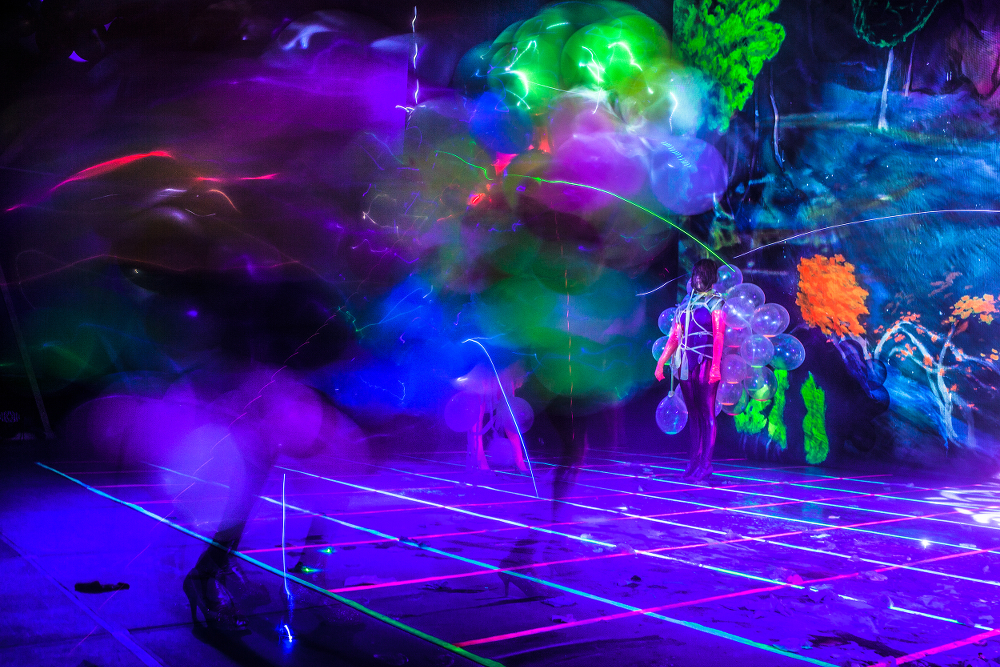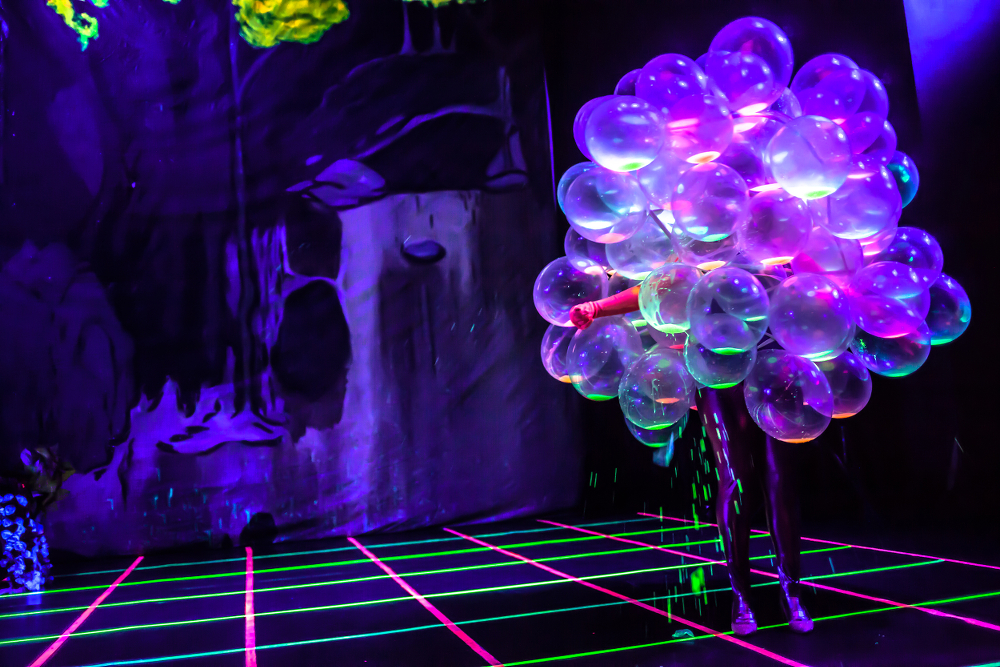An image from the Standard Bank Young Artist of the Year for Performance Art winner
It is a Saturday, July 4, at the National Arts Festival. The infamous wintry cold of Grahamstown is conceding to the lukewarm sunshine. We are on the mountaintop of the 1820 Settlers National Monument overlooking the town. Desolation lurks on the colourful but opaque edge of the city, where darkies are domiciled. And, today, black children with white painted faces, mamas in traditional clothing and others prowl and prance for a predominantly white audience. They are enchanted.
Throngs of curious cultured people pace around nervously. A friend jokingly says there’s nothing “national” about this festival — it is the settlers’ party. We are waiting to see Athi-Patra Ruga’s new show, The Elder of Azania, a sequel to his acclaimed The White Woman of Azania Saga. Ruga’s work does not apologise for itself. It is. It’s bold and daring. It’s odd and often discomforting.
Similar to his boisterous laughter, Ruga’s use of colour beckons our attention. And now he takes his grandiose palette to the National Arts Festival in Grahamstown as a 2015 Standard Bank Young Artist of the Year winner for performance art.
Ruga is a trained fashion designer, and his fine art retains elements of fashion in his signature costumes and appearances. His work is an interesting meeting point between art and fashion, in ways that generally collapse disciplinary boundaries.

Fans and contemporary art enthusiasts promise to fill the auditorium. We enter and hear a familiar voice speaking, accompanied by chirping and other obscure sounds that give it the ambience of the plains.
Like God’s voice in the bush, a looping recitation informs us about the ruling matriarch, her Majesty the Versatile Queen Ivy. This is the mythical subject that grounds Ruga’s flirtations with Azania. On the phantasmagoric stage, partly nightmarish and partly enchanting, an anonymous figure appears, dressed eccentrically and seated on two others of her kind, twitching and fiddling. It is she, we presume – the elder.
As the voice rages through the theatre, telling the story of this elder, figures buried in balloons idle with impatience on the left of the stage. Soon, in droves, they tip toe across the purplish stage,and start bursting each other’s balloons in a dramatic fashion. With each balloon pop a figure appears behind them.
Performers walk on to the stage, tussle with each other, and more balloons pop. These minor bursts discharge various substances on to the floor — liquid, powder or little lights — adding to the mysterious aura of the already mesmerising colours, costumes and spectacle. This theatrical brawling invites giggles, and it is this comical element that has become a standard feature in Ruga’s work.
The man sitting in front of me cannot restrain himself — he is in stitches throughout the show. Unlike at jazz concerts, for example, where the audience is socialised to clap at the “right” moments, the audience’s response to Ruga’s performance made it feel like an endless stand-up show.
At best, it seemed, Ruga’s show remained suggestive. One had to grapple with this fantastical element and its meaninglessness, with no hope of substance. What one sees tends to stop at mere luminous exhibitionism, a spectacle of glare and glitter that blinds rather than unveils.
The artist creates self-concocted histories and myths to feign a semblance of content, but his project seems more like a neo-avant-gardist catwalk display, at best an opening act for Lady Gaga.

In the classical reading of art, whether didactic or self-referential, art revolts against the shutting down of the senses. It opens possibilities, defies dogmas. Historically, colour, like light, served the relative purpose of being revelatory. But, today, especially in its kaleidoscopic parade, ironically colour serves as the veneer that traps us in obscurantism.
Should we then wonder why Ruga chooses both colour and myth as his basis? Actually, there is nothing more valorised today than empty talking. In Ruga’s Elder of Azania, we seem to be sadistically led into an unfathomable jungle of pre-temporal fairytales, where even the term Azania is mere hypothesis without purpose.
It is just an aesthetic prop used like a balloon to add zest to his hogwash. One can then imagine the interest generated by such work in the anti-black mainstream art world and among members of the general public. Often, when I encounter Ruga’s Azania, either as myth, construct or the fantasy of a bygone era, I am repelled by its tiring reduction.
In a way that predominately locks the concept as some tabula rasa, outside the present, it is perhaps a form of denying its ability to renew itself in every historical moment. Azania is the name that defines a liberated Africa; it is not a myth but an undying yearning for freedom.
Unlike Ruga’s colorful dissuasion that paints us a contrived fairytale made of beautiful things, the dream of Azania isn’t a fantasy about an ancient world but that of living in the present, free and human. Mayibuye!